20 Types of Ducks to Look for This Spring
Updated: Mar. 17, 2021
Many ducks are already migrating toward their breeding grounds. Here are some of the types of ducks that you are likely to see during spring migration.
Although it might not feel like spring migration should be starting up, many types of ducks are already beginning their trek northward. As soon as lakes and reservoirs have open water, you can count on many ducks, geese, and other waterbirds to start their migration back to their breeding grounds. These 20 types of ducks are some of the ones you are likely to see if you head out to your local lake, reservoir, or marsh with a spotting scope this spring!
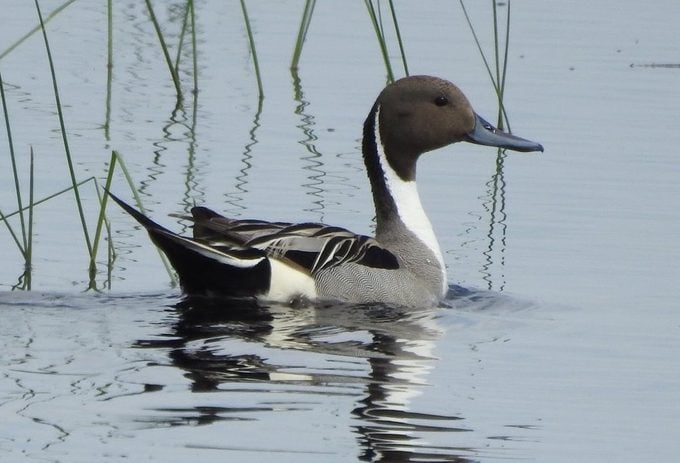
Northern Pintail
The northern pintail is one of my favorite types of ducks. The male’s pattern is extremely unique and distinct so you are unlikely to confuse this species with any of the other ducks. This species is more likely to be found in shallow ponds and marshes than on large bodies of water. Look for the very long tail feathers in flight, which will help you pick this species out from a great distance.
Learn more about beach birds and beach birding locations.
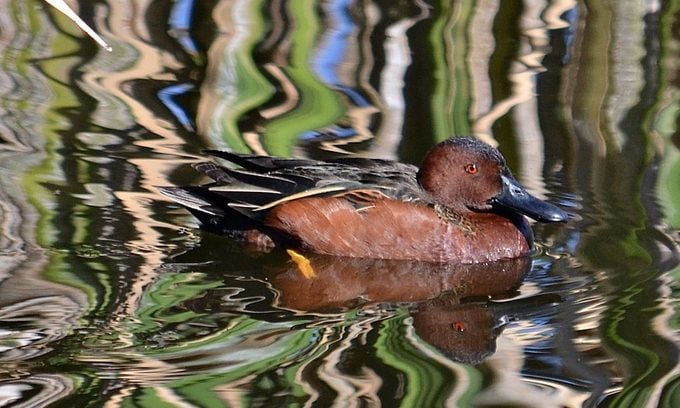
Cinnamon Teal
“This is a cinnamon teal swimming in a pond, reflecting all the colors surrounding it. The colors in the water include blues from the sky, the greens from the grasses, and the browns from the bushes and cattails,” says Vicki Faist.
Check out 15 common backyard birds you should know.
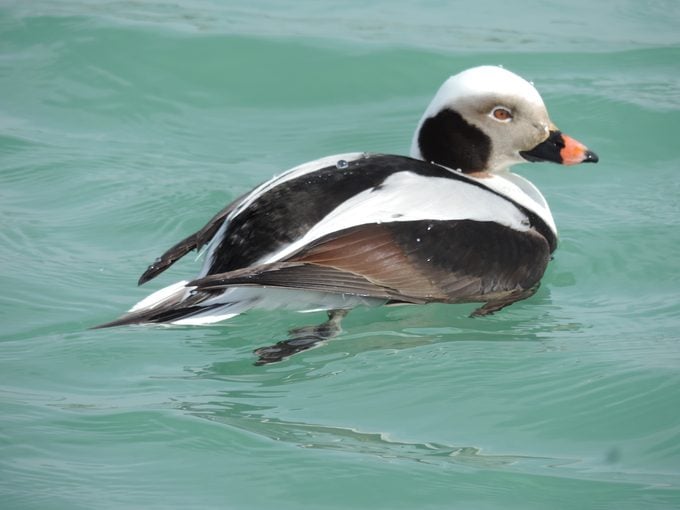
Long-Tailed Duck
Sue Gronholz of Beaver Dam, Wisconsin, shared this photo of a long-tailed duck. This species has a small bill and the male is known for its long tail feathers.
Discover the most beautiful birds in America.
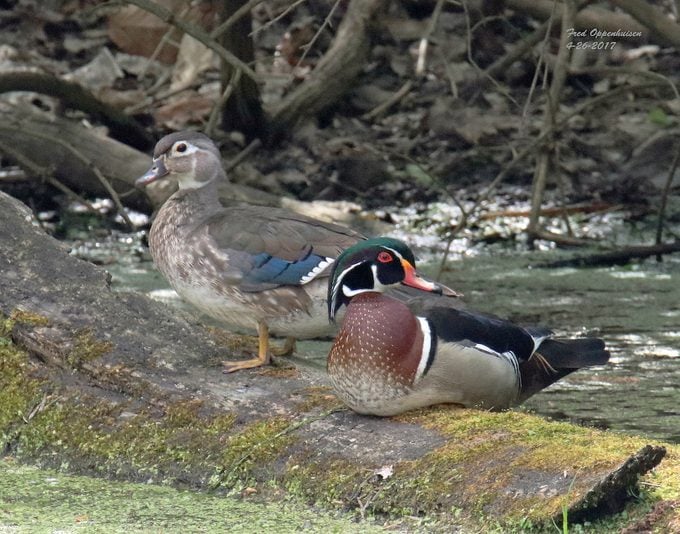
Wood Duck
“Of all of the different types of ducks in the world, the wood duck is one of the most awesome looking. The super colors make the male look like a painting,” says Frederick Oppenhuisen.
Don’t miss these Great Lakes birding hotspots.
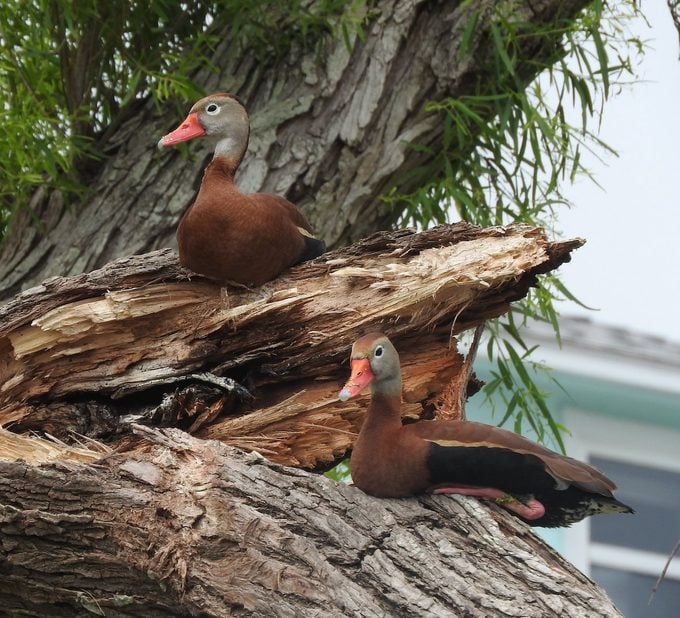
Black-Bellied Whistling Duck
Look for these short-distance migrants down south. The black-bellied whistling duck is a common bird in Central and South America, but in the past decades, it has expanded its range north into Florida, Texas, and parts of Louisiana.
Discover the amazing Lower Rio Grande Valley birds.
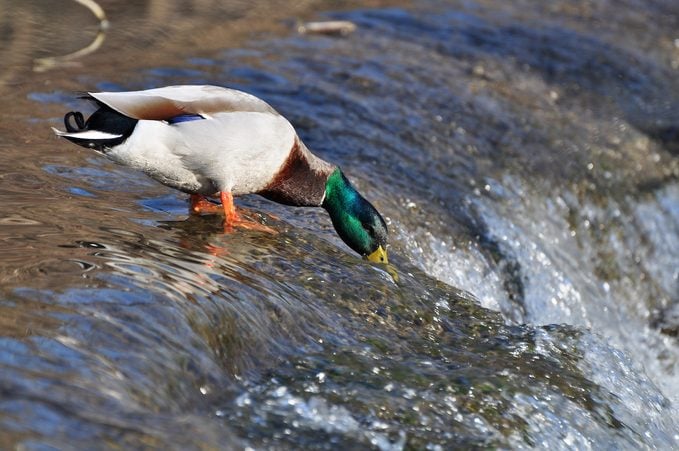
Mallard
“A friend and I decided to go to the park see what nature had to offer us one early spring evening. A creek flowed alongside a stretch of old colonial style homes in Sharonville, Ohio. This male mallard duck swam out and stopped for a drink and a nibble or two of the algae growing on the rocks under the surface of the rushing water, as the emerald green feathers of his head gleamed in the sunlight,” says Erick Watson.
Check out the 51 best spring bird pictures ever.
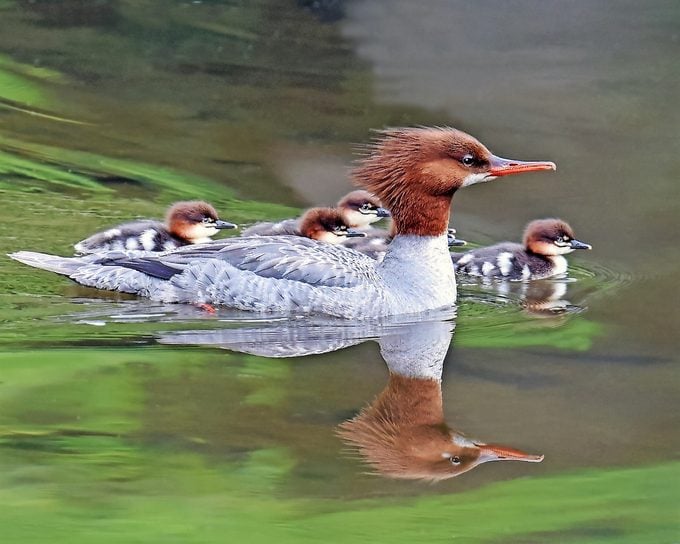
Common Merganser
“I loved watching the common mergansers swimming and eating crawfish among the rocks. I knew the female was nesting and watched daily for her to have the little ones. It was so much fun watching them learn how to dive for food—it seemed to come quite natural to them. The mother was very protective keeping them all as close to her as she could,” says Barbara Frankenfield.
Check out more super cute photos of baby birds.
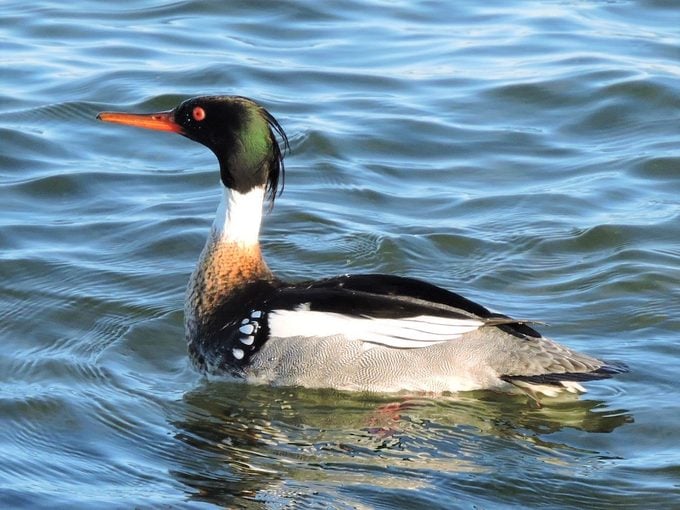
Red-Breasted Merganser
“The rolling waves of Lake Michigan made the perfect background for this handsome red-breasted merganser as he tried to impress the females. I took the photo from North Point in Sheboygan, Wisconsin,” says Robert Ongna.
We found sweet photos that show how birds flirt and attract mates.
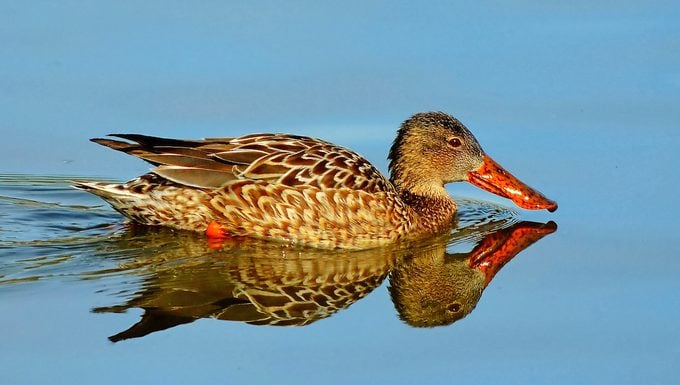
Northern Shoveler
The name of this type of duck tells you just about everything you need to know about it. It has an incredible shovel-like bill that it uses to filter mud as it looks for food.
Learn about 4 types of bird beaks and how birds use them.
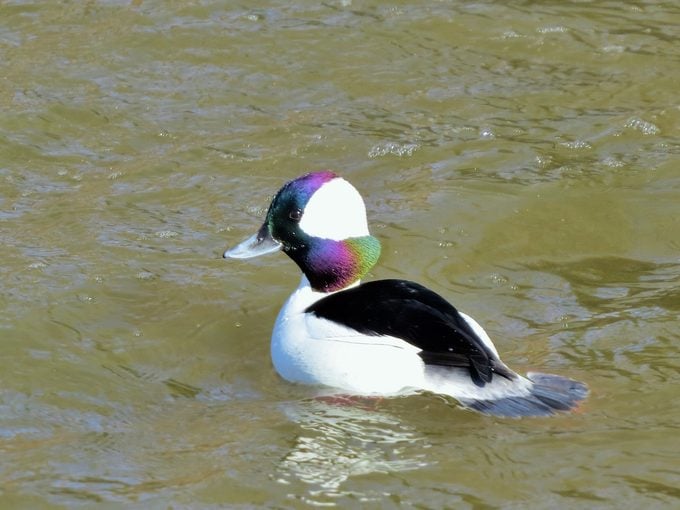
Bufflehead
This tiny diving duck is another one of my favorite waterfowl species. With a close view, the iridescent black on the head of the bufflehead is extremely striking!
Discover 6 romantic and fascinating swan facts.
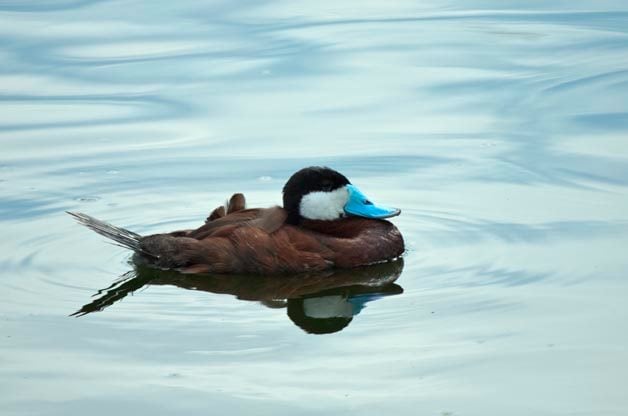
Ruddy Duck
A ruddy duck is very distinct with its reddish brown body, stiff pointed tail, and bright blue bill.
Check out 20 photos of breathtaking blue colored birds.
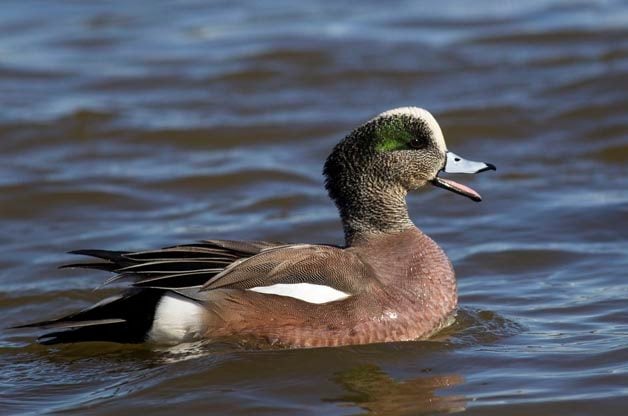
American Wigeon
American wigeon are likely to be found alongside northern pintail in shallow ponds and marshes. Keep a close eye on any large groups of American wigeon and you just might find a rare Eurasian wigeon in the flock! The white crown on this type of duck led to the old name “Baldpate” because it looks like a bald man’s head.
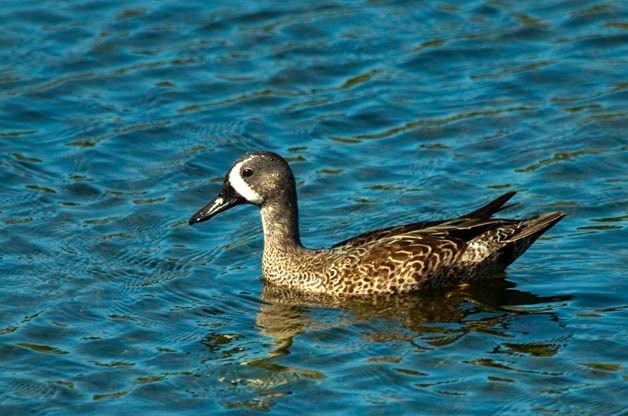
Blue-Winged Teal
Although their bill isn’t as distinctive as the northern shoveler, blue-winged teal use it to filter mud as they feed as well. The male of this species is easily identified by its bold white crescent on it’s head as well as its white hip-patch. Female blue-winged teal aren’t as flashy as the males, so they can blend in when sitting on their nests.
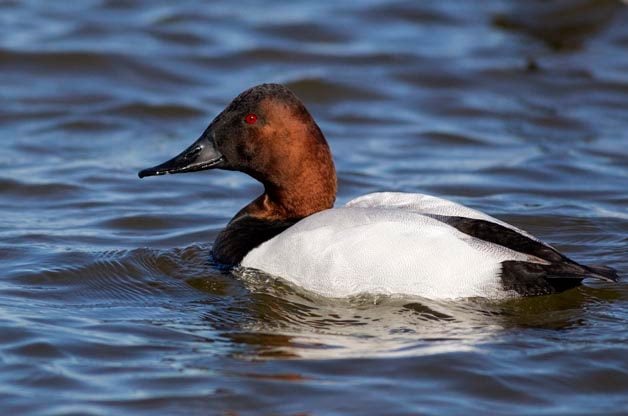
Canvasback
The canvasback prefers deeper water as it dives to catch its meals. Both males and females have a very distinct sloping shape to their head. I love how the stark white back contrasts with the rich brown color of the male canvasback’s head.
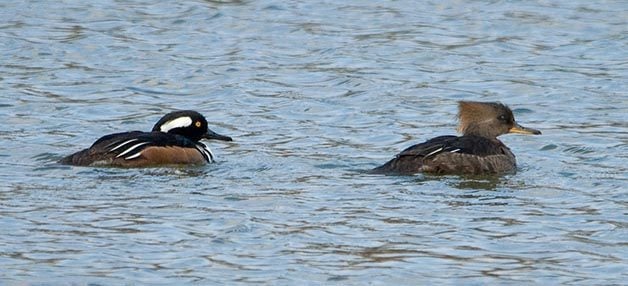
Hooded Merganser
Like other types of ducks I’ve mentioned, the male hooded merganser is much flashier than the female. This beautiful duck might look like it would stand out, but when it hides right along the shore it can be difficult to spot. This species and the bufflehead both nest in trees.
Learn about 8 different kinds of bird nests and how to spot them.
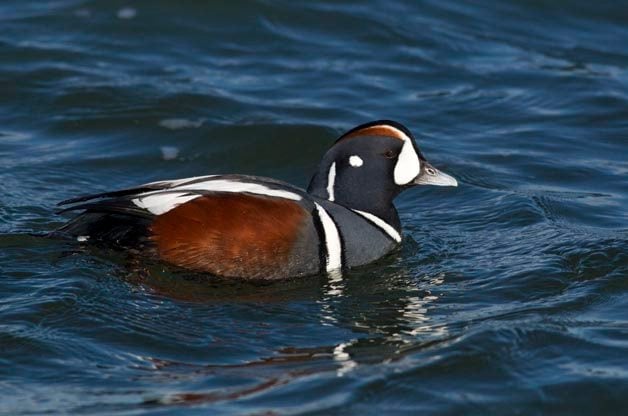
Harlequin Duck
If you are very lucky or live in the right spot, you might get to see a harlequin duck! Both the male and female have white facial markings.
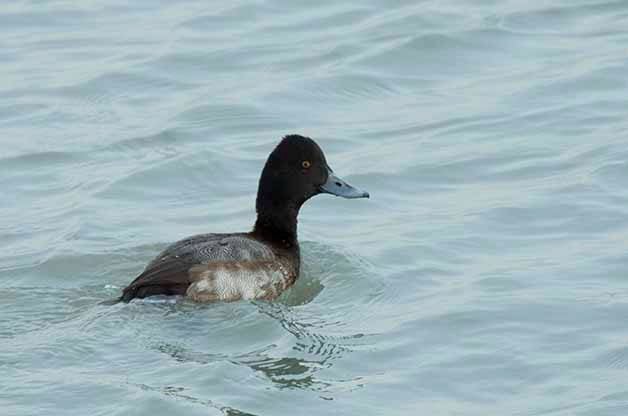
Lesser Scaup
Lesser scaup are one of the most common types of diving ducks in the Midwest during winter and migration. You’ll often see them in huge groups on open water.
Check out 6 bird migration patterns that have changed.
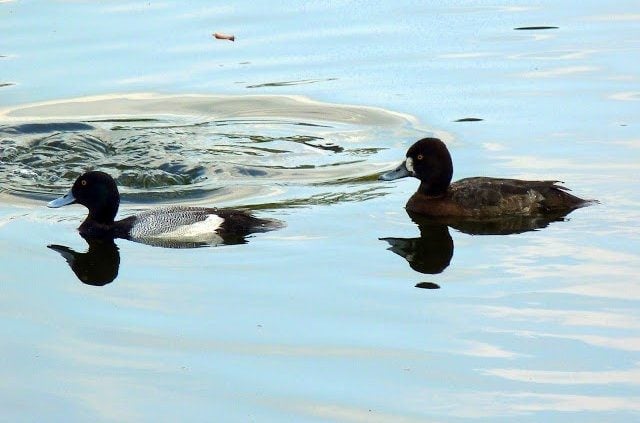
Greater Scaup
Jill Staake photographed these greater scaup ducks in Tampa, Florida. This species has a more rounded head than the lesser scaup.
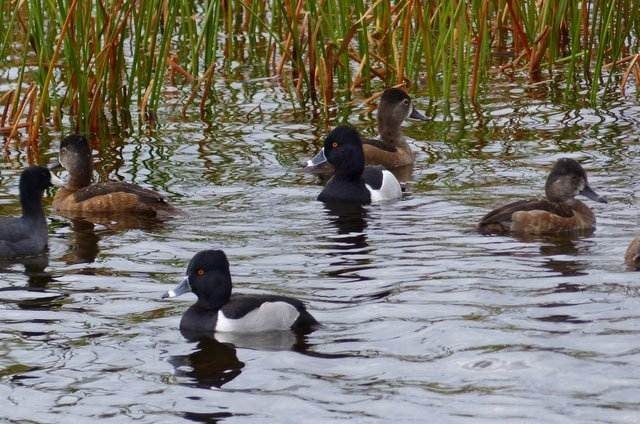
Ring-Necked Duck
Jill Staake captured this photo of ring-necked ducks at Merritt Island National Wildlife Refuge in Florida. You can identify these diving ducks by the distinctive white ring on the bill and a peaked head shape.
Get the best bird-watching tips for beginners.
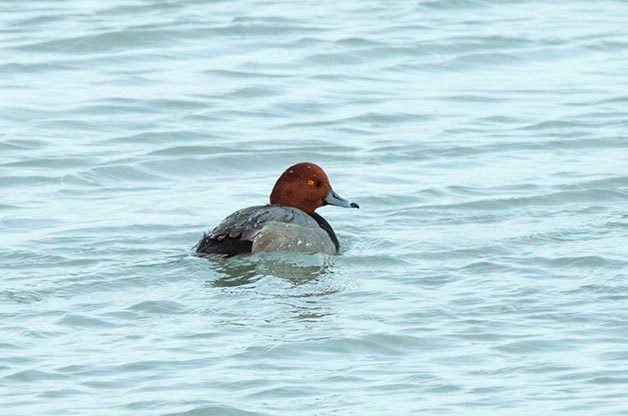
Redhead
Unlike the clean white back of a canvasback, the redhead has a gray back. It also has a much rounder head. The difference in shape of each bird is evident even from a distance.
